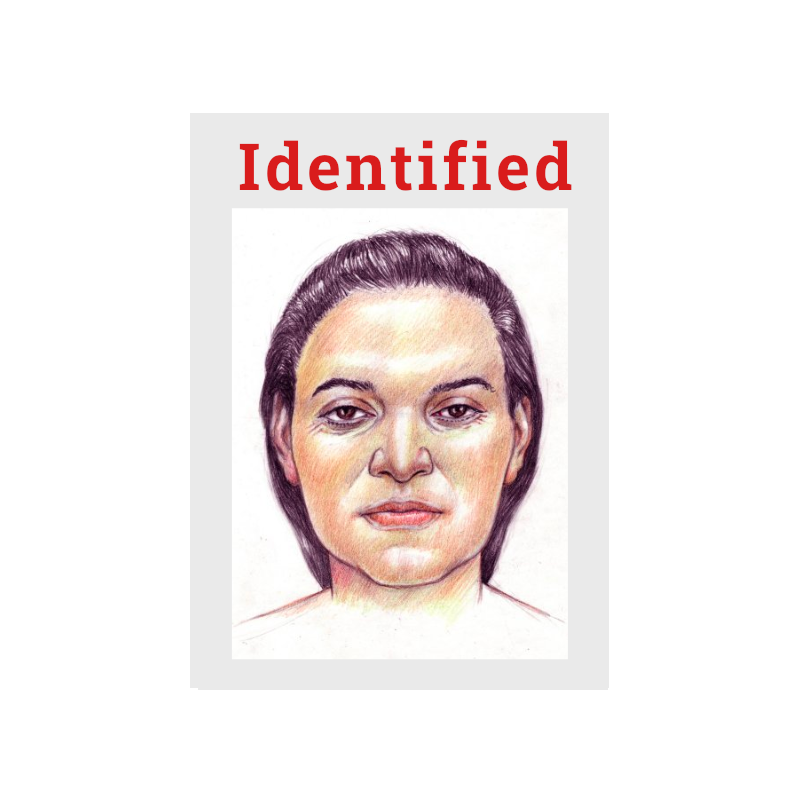Description
On November 21, 2004 a woman was found in the street at 15th Street and Broadway in Phoenix, Arizona minutes after being struck and killed by a car that left the scene. The deceased was wearing green sweatpants and a flowered t-shirt. The forensic pathologist who conducted the autopsy reported the woman was White/Caucasian or possibly Hispanic, 40-50 years old, 5′ 4″ tall, and 158 pounds with short black hair and brown eyes. Despite the fact that the woman’s face was recognizable, she remains unidentified.
NamUs ID: UP2004
Date Body Found: November 21, 2004
Race: White / Caucasian
Gender: Female
Estimated Age: 40-50
Estimated PMI: Minutes
Location: Phoenix, AZ
Agency of Jurisdiction
Phoenix Police Department
Stuart Somershoe, Detective
602-261-8065
stuart.somershoe@phoenix.gov
Link to More Information
https://www.namus.gov/UnidentifiedPersons/Case#/2004/
https://unidentified.maricopa.gov/Home/Case?CaseNumber=04-3949
https://unidentified.wikia.org/wiki/Phoenix_Jane_Doe_(November_21,_2004)
http://www.doenetwork.org/cases/182ufaz.html
https://www.phoenix.gov/newsroom/police/1659
Status: Identified
Status Update – 08/15/2020
Image Credit: Stephen Missal
The DNA Doe Project and Phoenix Police have identified Amelia Muñoz Loera, who died after being struck by a car that left the scene at the intersection of 15th Street and Broadway in Phoenix in November, 2004. Loera, who was 41 at the time of her death, was born in Mexico.
Investigators at the time of Loera’s death could locate no clues to her identity, and the case went cold for 16 years before detectives with the Phoenix Police brought her to the DNA Doe Project to try investigative genetic genealogy to restore her name. Extraction of DNA and the process of translating the sample into a workable DNA profile was relatively straightforward, but Loera’s family tree was difficult to untangle.
Loera’s relatives came from the Aguascalientes region of Mexico, a community genetically complicated by endogamy, or intermarriage between related families over generations. Endogamy can make it difficult to determine relationships based on traditional measures in genetic genealogy, making distant relatives seem closer in the family tree because they share more DNA. The name change of a close relative further hampered the identification.
“This was one of the most challenging cases of endogamy imaginable – our closest matches shared two close relationship paths with our Doe,” said investigative genetic genealogist Lisa Ivany. “One of those paths led to a New Yorker who served in the American Revolutionary War, which was quite a surprise in a case with deep Mexican roots!”
Cases involving recent immigrants and minority populations are also more difficult to solve because far fewer of their relatives have uploaded to the databases at GEDmatch.com and FTDNA.com. In some circles, these cases are considered unworkable, but the DNA Doe Project never gives up.
“Our team dedicated more than 1300 hours to this case without a resolution, and then it was solved in a single weekend thanks to Amelia’s niece who took action by testing on FamilyTreeDNA,” said Team Leader Cairenn Binder.
“Ultimately, we are so grateful that a close member of Amelia’s family made the decision to test in an effort to locate her,” Ivany added. “The more people that choose to test at FamilyTreeDNA or upload to GEDmatch means that we have a better chance of reuniting these individuals with their families.”
The DNA Doe Project is grateful to the groups and individuals who helped solve this case: the Phoenix Police Department, who entrusted the case to the DNA Doe Project; HudsonAlpha Discovery for extraction of DNA from blood and whole genome sequencing; Kevin Lord of Saber Investigations for bioinformatics; GEDmatch Pro and FTDNA for providing their databases; and DDP’s dedicated teams of volunteer investigative genetic genealogists who work tirelessly to bring all our Jane and John Does home.
Last Updated: September 12, 2023




